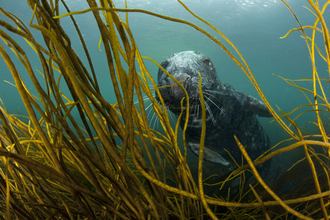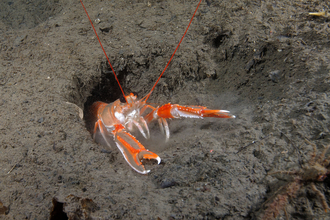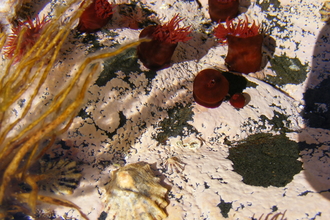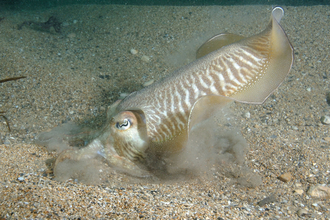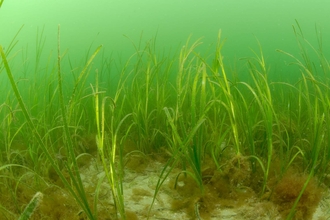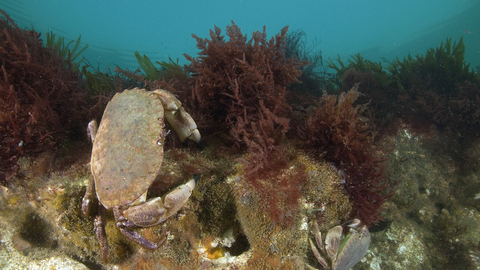
Paul Naylor
Chalk reefs
Beth yw o?
A chalk reef is a natural seabed made from chalk that rises above the surrounding seafloor. Chalk reefs are marine rock formations. They are globally scarce habitats that are home to a range of marine life.
Chalk is a famously soft kind of rock, so chalk reefs attract special rock-boring animals such as piddocks, spionid worms and boring sponges. These rock-boring animals create cracks and crevices in the chalk, which provide homes for many other creatures such as tompot blennies and lobsters. This marine life on the seabed attracts more mobile species to move into the area, in search of food, shelter or a mate.
How has chalk formed it’s own reef?
Chalk is a white limestone formed from the shells of tiny marine organisms (plankton) that lived in seas that covered much of Britain around 70 to 100 million years ago. When these tiny organisms died, they sank to the seafloor and formed layers of shells which built up and hardened into chalk deposits over millions of years.
Pam fod o fel hyn?
You might hear ‘reef’ and think ‘coral’, but reefs can be made from anything, including chalk. A reef is simply a ridge, ledge or outcrop that sticks out of the surrounding seabed. Over time, waves and currents wear away chalk cliffs and the seafloor, leaving behind a rocky reef surface with arches, ledges, and cracks. This chalk then provides a base which marine life can bore, settle and grow on.
Dosbarthiad yn y DU
You can see chalk reefs where there are chalk cliffs or where chalk bedrock is exposed on the seabed. There are some great examples between Brighton to Eastbourne, whilst the Norfolk coastline is home to Europe’s longest chalk reef - Cromer Shoal Chalk Beds. Comer’s internationally important chalk reef (our own version of the great barrier reef!) has been designated in a Marine Conservation Zone.
Chalk forms less than 1% of Britain’s coastline. Internationally, coastal chalk is even more scarce, with most of it in north-west Europe. England holds a globally significant proportion of all the world's marine chalk, meaning we have a special responsibility to protect it.
Both intertidal and subtidal chalk are classified as 'habitats of principle importance' in England, within section 41 of the Natural Environment and Rural Communities (NERC) Act 2006.
Beth i edrych am
Chalk reefs are usually found near chalk cliffs or areas where chalk bedrock is exposed on the seabed. Some chalk reefs are exposed when the tide is out – look for areas with soft white rocks. You might see cracks and shelves in the chalk, known as crevices and ledges. There may also be rock pools, small pools of water left behind by the tide. These areas are often teeming with seaweed and marine life such as algae, sponges, sea anemones, and small fish or crabs living on or around the reef.
Cadwraeth
Though a protected habitat, chalk reefs remain at risk from various human activities.
Any human activities which cause increased erosion or damage to the chalk reef structure threaten this special habitat.
Over a third of coastal chalk in Sussex alone has been modified by coastal defences and other forms of engineering work.
This often damages the biodiversity of chalk reefs, as does toxic contamination and the physical loss of areas of chalk altogether.
Invasive species such as Pacific oysters and wireweed are also a threat, as they displace native wildlife.

